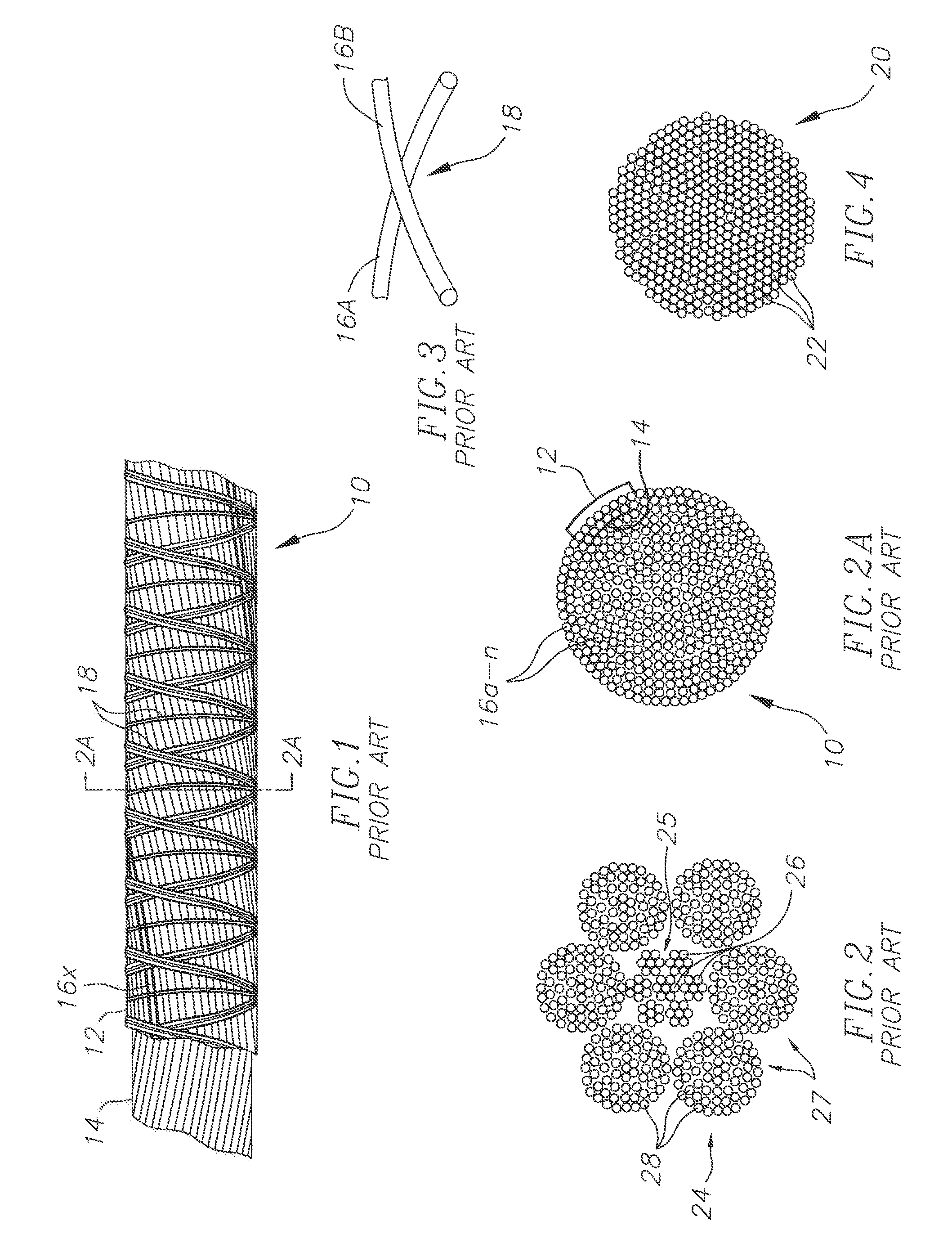Method and device for handling elongate strength members
a technology of strength members and elongated parts, applied in the field of strength members, can solve the problems of cable twisting or coiling in one direction, durkee et al. methodology would not be applicable to cable, and composite cable with parallel composite rods
- Summary
- Abstract
- Description
- Claims
- Application Information
AI Technical Summary
Benefits of technology
Problems solved by technology
Method used
Image
Examples
Embodiment Construction
[0034]FIG. 1 is a top, partially exposed view of a section of a prior art stranded cable 10 showing two counter-helically wound layers 12 and 14 of composite rods 16a-n, wherein n=any number of rods used to make up the cable 10. Also shown are binding threads 18 which are wrapped around the composite rods, or metal wires, or plastic fibers, etc. to hold them together Other than the binding thread, and a cover material, such as a plastic layer (not shown), the composite rods, or metal wires, or plastic fibers are otherwise not held together and the composite rods, or metal wires, or plastic fibers 16a-n are capable of moving laterally with respect to each other, such as when the cable 10 is bent or curved, or such as when it is coiled around a spool. One rod, or metal wire, or plastic fiber 16x is shown with contrasting shading to show how the composite rods, or metal wires, or plastic fibers are counter-helically spiraled to make up the stranded cable 10.
[0035]FIG. 2 is a cross-sect...
PUM
| Property | Measurement | Unit |
|---|---|---|
| diameter | aaaaa | aaaaa |
| diameter | aaaaa | aaaaa |
| diameter | aaaaa | aaaaa |
Abstract
Description
Claims
Application Information
 Login to View More
Login to View More - R&D
- Intellectual Property
- Life Sciences
- Materials
- Tech Scout
- Unparalleled Data Quality
- Higher Quality Content
- 60% Fewer Hallucinations
Browse by: Latest US Patents, China's latest patents, Technical Efficacy Thesaurus, Application Domain, Technology Topic, Popular Technical Reports.
© 2025 PatSnap. All rights reserved.Legal|Privacy policy|Modern Slavery Act Transparency Statement|Sitemap|About US| Contact US: help@patsnap.com



